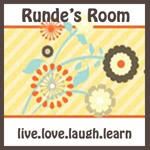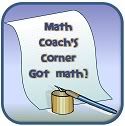Pin It
Without the authorization and validation of any buzz words, our small group began our own Professional Learning Community months ago. Little did we know! The hunger driven by confusion about student deficiencies led to supportive discussions in the hallway and parking lot. These "backyard" meetings created an empowered mission statement. We knew that we could f
ix the problems with our student performance, that we had the brain-power to figure out where we were going wrong, and that a genuine caring and acceptance of our BEAM BABIES was the first and only requirement for membership in our club of change.
This week I am experiencing a county sponsored workshop on PLC’s. Ken Williams is leading our sessions and bringing materials developed as a result of Richard DuFour’s dedication to building a collaborative culture with a focus on learning for all.
Our Math Team will be happy to hear that we are on the right track.
So far, we have identified a shared vision – We are going to climb out of this big, deep hole that has appeared during the last few years. The hole, of course, is the negative growth and poor EOG performance that continues to slap us sharply each spring. We can see our DREAM LEVEL peeking out behind the white fluffy clouds. However, the steps upward are still hiding behind locked doors. Who has the keys?
We have shared values – Our “backyard” discussions have easily branched from common ideals about student behaviors and expectations to strategies that will ensure consistency. Consistency, in fact, stood up and took the role of foundational support. Whether we have talked about vocabulary definitions, homework and supplemental materials, or work ethic – we kept repeating to ourselves “Our students need a consistent teaching philosophy.”
We have identified goals – As of today, we really don’t know what is going to happen when the doors open for students. We don’t know what change we can promote in the next few weeks.
But, during our summer meetings, we’ve used the time to prepare materials that we know will make an impact. Vocabulary instruction and strategies for both math and character traits in language arts became the number one target. Fourth and Fifth grade teachers have come together to develop a list of words and definitions crucial to EOG success.
In addition, we’ve isolated NCDPI indicators that are test heavy weights and flow across the grade levels. We are developing SMARTBoard tools to share effective, interactive learning activities for specific problem area indicators.
We have also identified skills that students need to be successful in problem solving (drawing a place value chart, using the multiplication grid, placing whole numbers and fractions on a number line). We have planned to create a “toolbox” of consistent alternate methods for teaching.
Ongoing discussion and decisions about assessment tools depend on more research and support for either purchased or teacher-made supplemental materials.
Little did we know that we were well on our way. And now we can say . . . we are working within a collaborative study of essential learning that WILL ensure success for every student at BEAM.
SMILE, we’ve got a good thing. Keep going. Keep pushing Mama Cats.
Here's the link for a PLC Blog ALL THINGS PLC!
 Play this jeopardy game online! More like this HERE!
Play this jeopardy game online! More like this HERE!
































